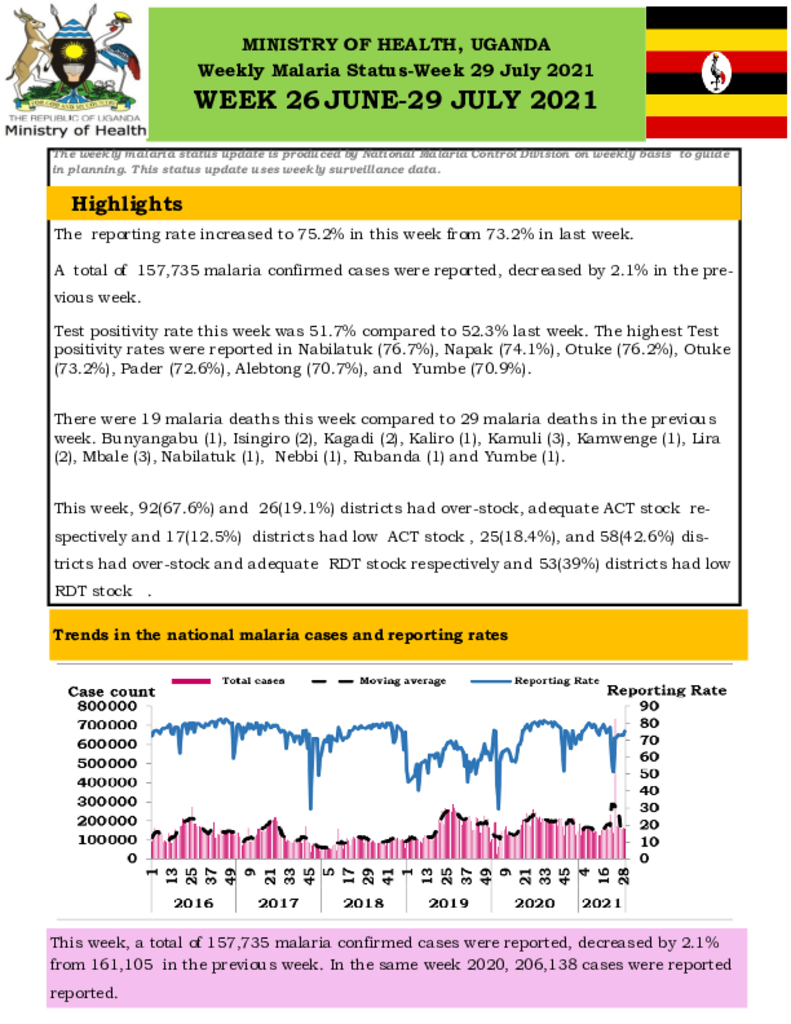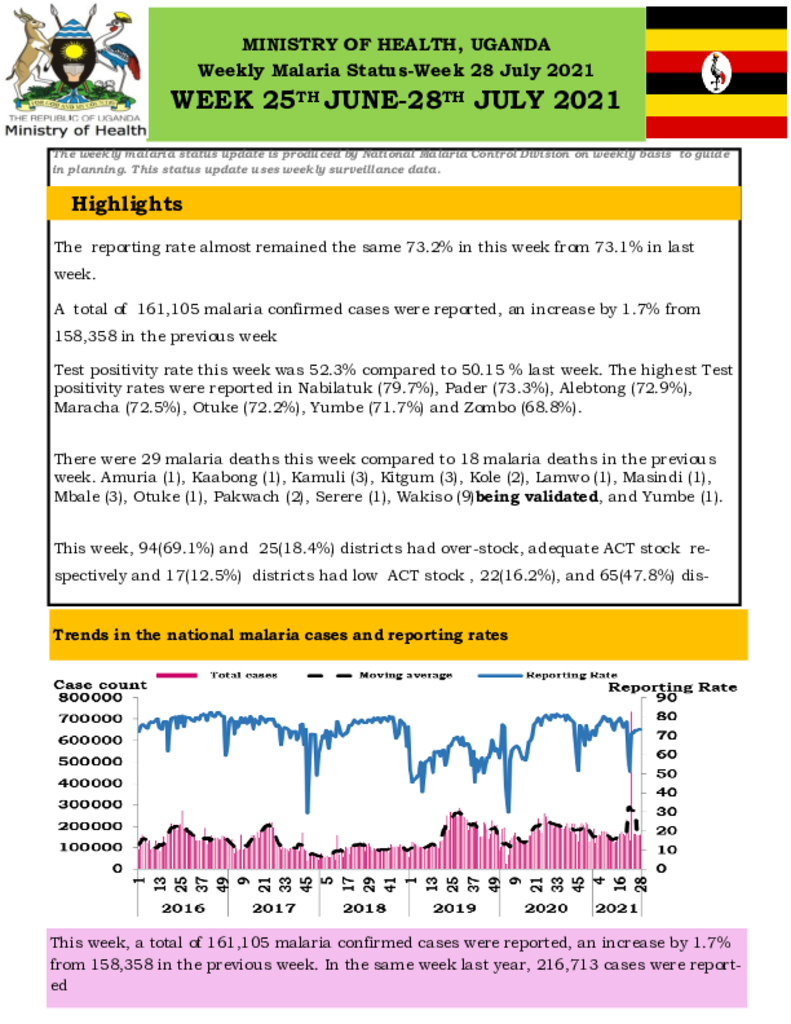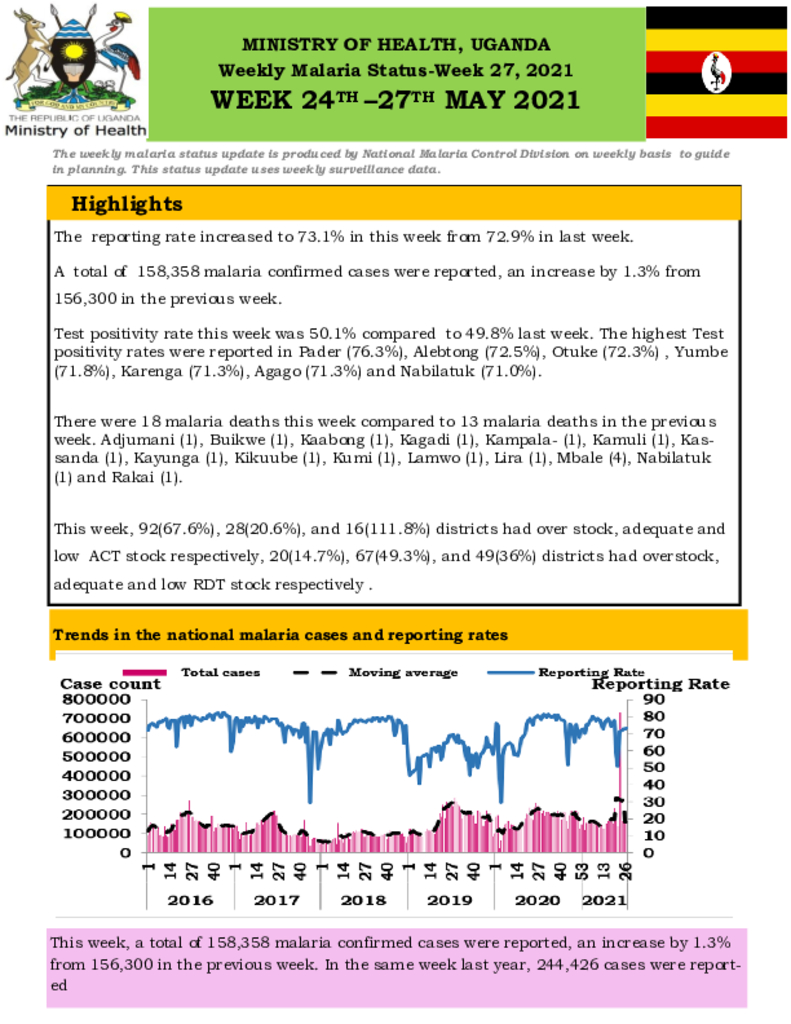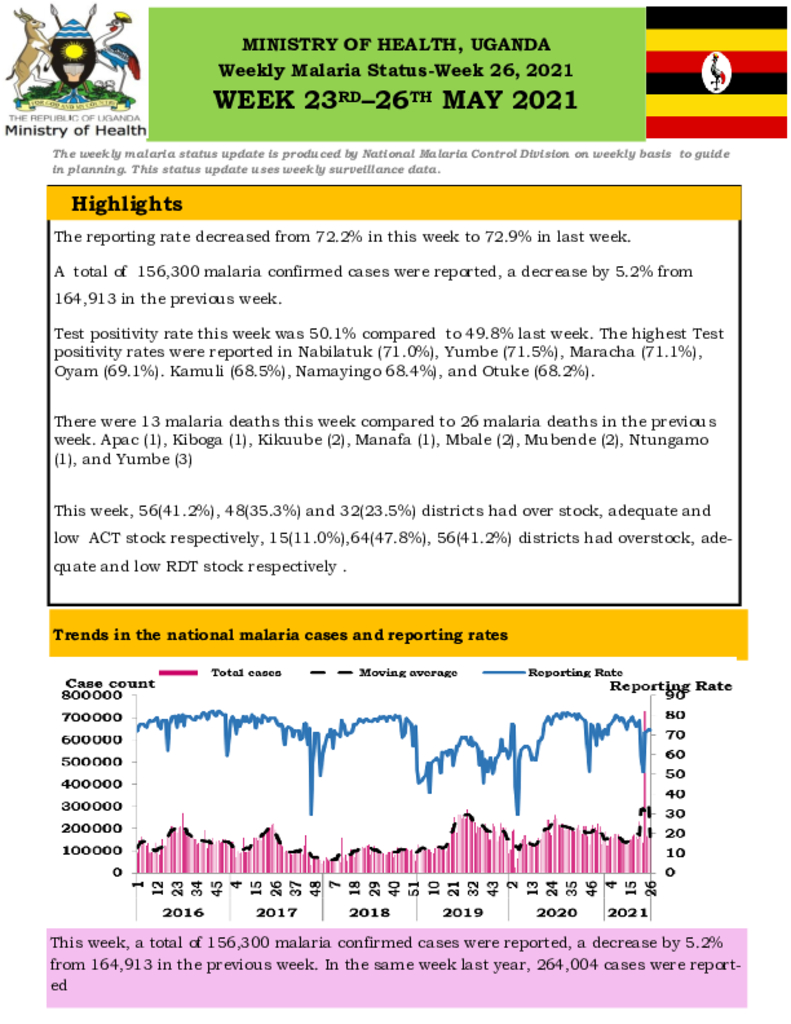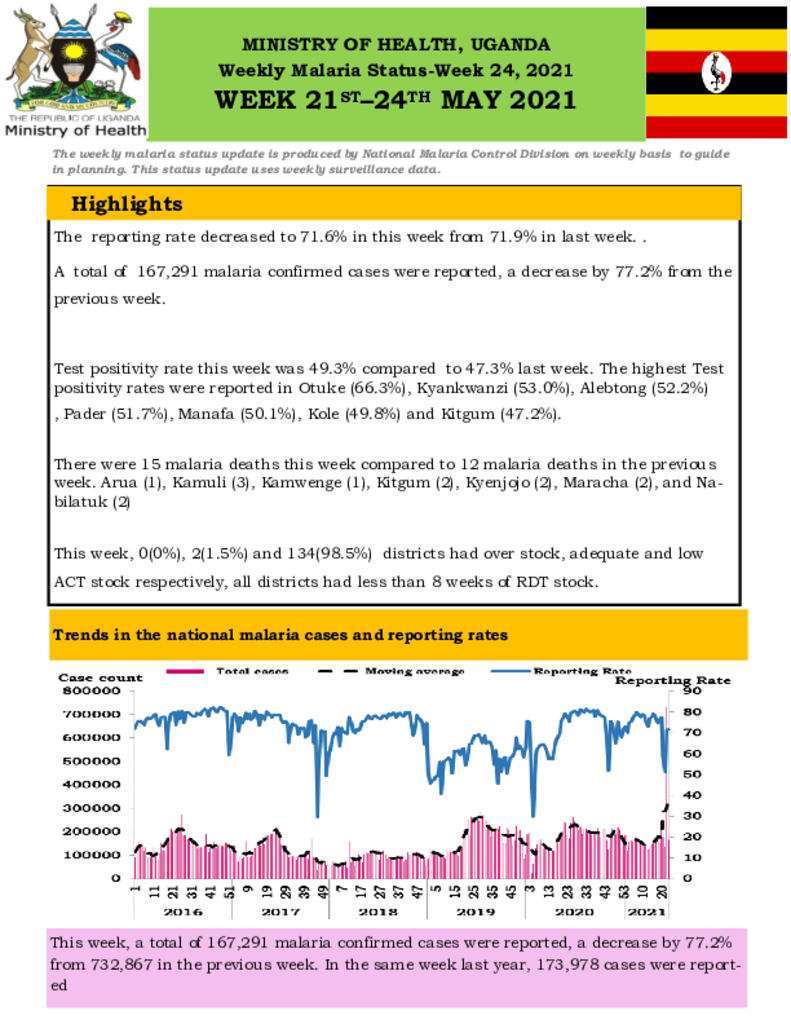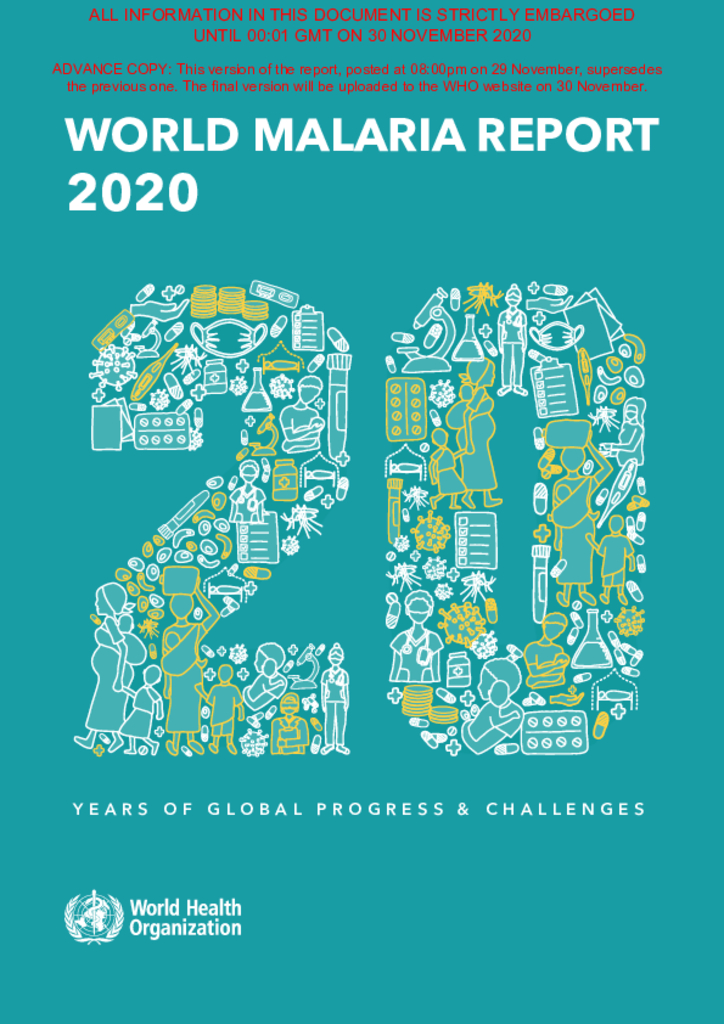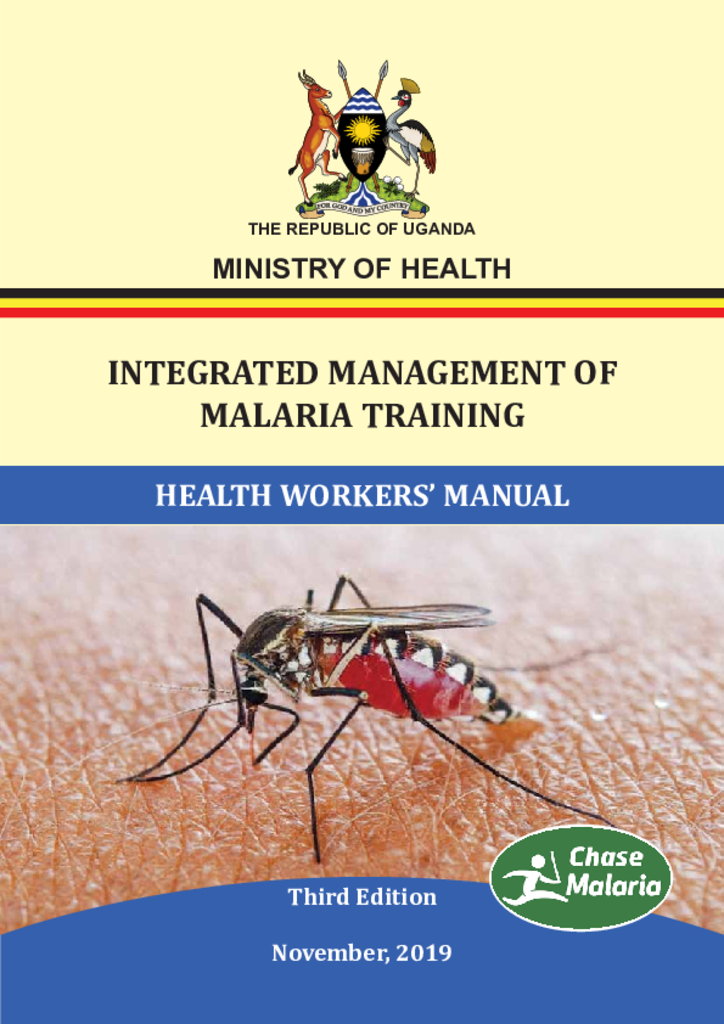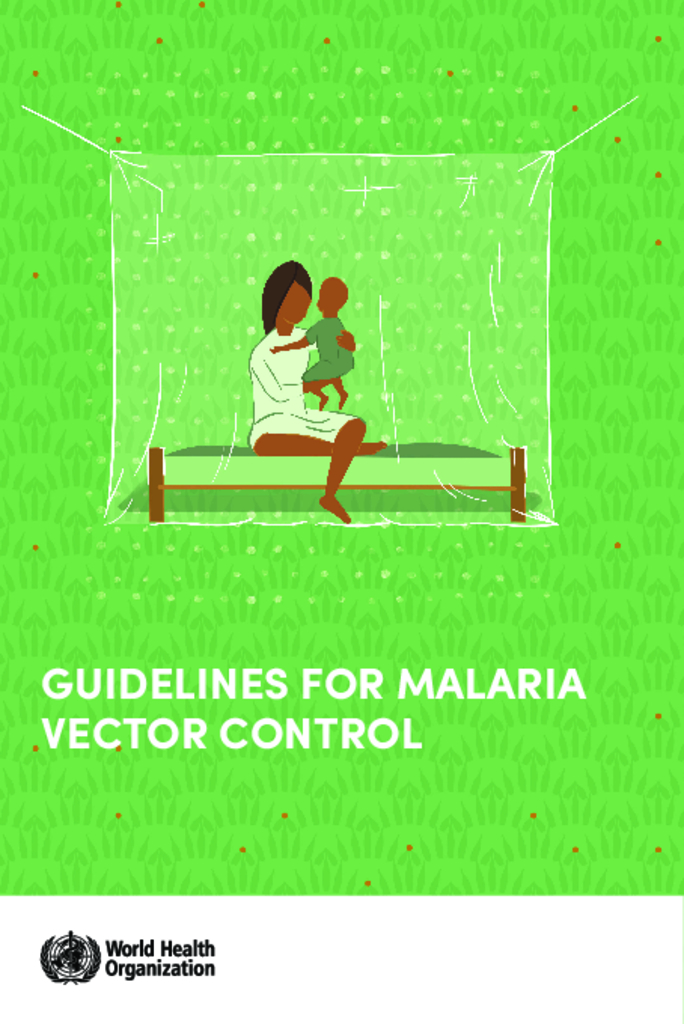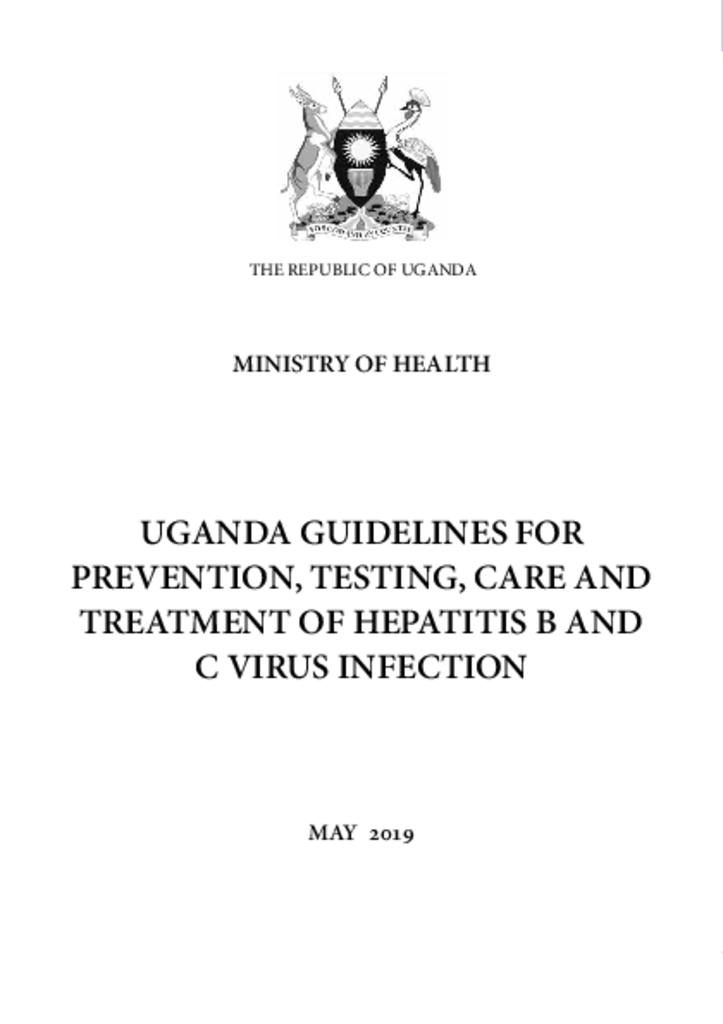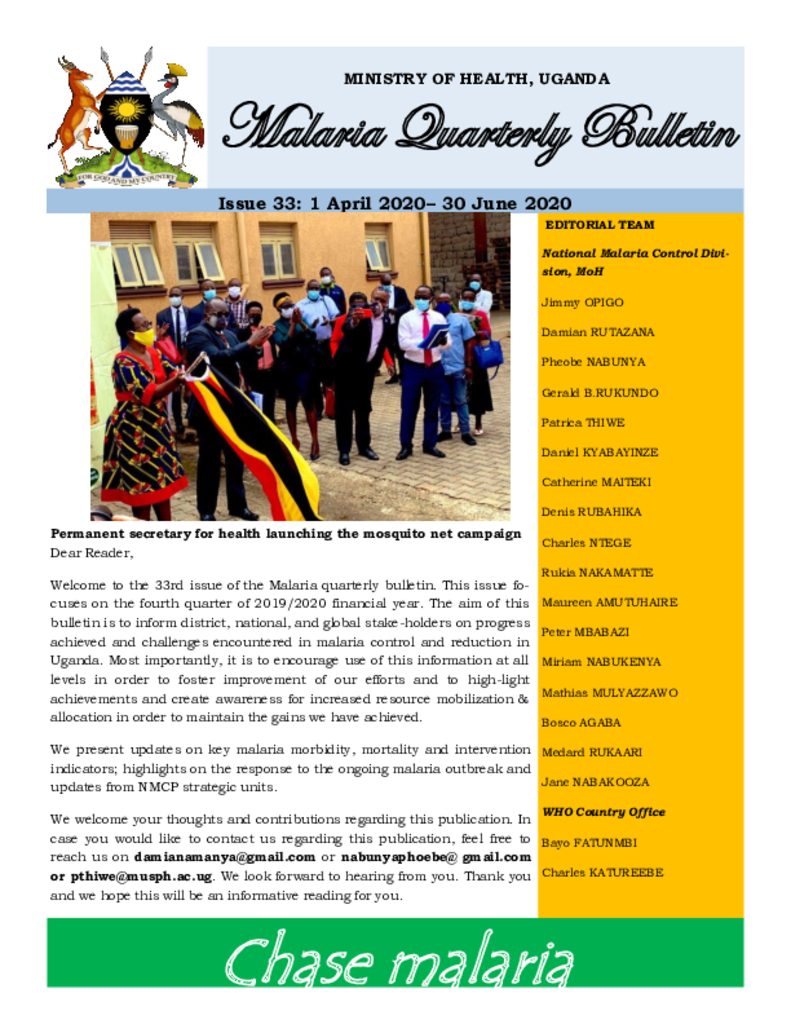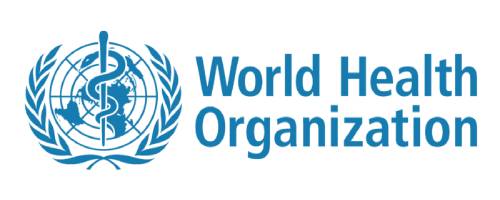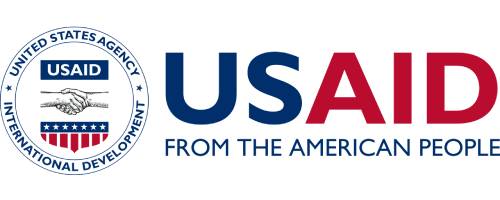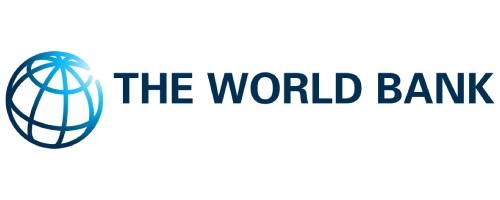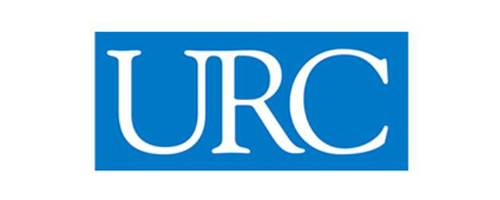The reporting rate increased to 75.2% in this week from 73.2% in last week. A total of 157,735 malaria confirmed cases were reported, decreased by 2.1% in the previous week.Test positivity rate this week was 51.7% compared to 52.3% last week. The highest Test positivity rates were reported in Nabilatuk (76.7%), Napak (74.1%), Otuke (76.2%), Otuke (73.2%), Pader (72.6%), Alebtong (70.7%), and Yumbe (70.9%).
There were 19 malaria deaths this week compared to 29 malaria deaths in the previous week. Bunyangabu (1), Isingiro (2), Kagadi (2), Kaliro (1), Kamuli (3), Kamwenge (1), Lira (2), Mbale (3), Nabilatuk (1), Nebbi (1), Rubanda (1) and Yumbe (1).
The reporting rate almost remained the same 73.2% in this week from 73.1% in last week. A total of 161,105 malaria confirmed cases were reported, an increase by 1.7% from 158,358 in the previous week Test positivity rate this week was 52.3% compared to 50.15 % last week. The highest Test positivity rates were reported in Nabilatuk (79.7%), Pader (73.3%), Alebtong (72.9%), Maracha (72.5%), Otuke (72.2%), Yumbe (71.7%) and Zombo (68.8%). There were 29 malaria deaths this week compared to 18 malaria deaths in the previous week. Amuria (1), Kaabong (1), Kamuli (3), Kitgum (3), Kole (2), Lamwo (1), Masindi (1), Mbale (3), Otuke (1), Pakwach (2), Serere (1), Wakiso (9)being validated, and Yumbe (1).
The reporting rate increased to 73.1% in this week from 72.9% in last week. A total of 158,358 malaria confirmed cases were reported, an increase by 1.3% from 156,300 in the previous week. Test positivity rate this week was 50.1% compared to 49.8% last week. The highest Test positivity rates were reported in Pader (76.3%), Alebtong (72.5%), Otuke (72.3%) , Yumbe (71.8%), Karenga (71.3%), Agago (71.3%) and Nabilatuk (71.0%). There were 18 malaria deaths this week compared to 13 malaria deaths in the previous week. Adjumani (1), Buikwe (1), Kaabong (1), Kagadi (1), Kampala- (1), Kamuli (1), Kassanda (1), Kayunga (1), Kikuube (1), Kumi (1), Lamwo (1), Lira (1), Mbale (4), Nabilatuk (1) and Rakai (1)
The reporting rate decreased from 72.2% in this week to 72.9% in last week. A total of 156,300 malaria confirmed cases were reported, a decrease by 5.2% from 164,913 in the previous week. Test positivity rate this week was 50.1% compared to 49.8% last week. The highest Test positivity rates were reported in Nabilatuk (71.0%), Yumbe (71.5%), Maracha (71.1%), Oyam (69.1%). Kamuli (68.5%), Namayingo 68.4%), and Otuke (68.2%). There were 13 malaria deaths this week compared to 26 malaria deaths in the previous week. Apac (1), Kiboga (1), Kikuube (2), Manafa (1), Mbale (2), Mubende (2), Ntungamo (1), and Yumbe (3)
The reporting rate decreased to 71.6% in this week from 71.9% in last week. . A total of 167,291 malaria confirmed cases were reported, a decrease by 77.2% from the previous week. Test positivity rate this week was 49.3% compared to 47.3% last week. The highest Test positivity rates were reported in Otuke (66.3%), Kyankwanzi (53.0%), Alebtong (52.2%) , Pader (51.7%), Manafa (50.1%), Kole (49.8%) and Kitgum (47.2%). There were 15 malaria deaths this week compared to 12 malaria deaths in the previous week. Arua (1), Kamuli (3), Kamwenge (1), Kitgum (2), Kyenjojo (2), Maracha (2), and Nabilatuk (2) This week, 0(0%), 2(1.5%) and 134(98.5%) districts had over stock, adequate an
Reporting rate this week was at 70.4% compared to 72.9% in the previous week. A total of 158, 188 malaria confirmed cases were reported, an increase by 3.5% in the previous week Test positivity rate was 49.7% compared to 50.2% last week. The highest Test positivity rates were reported in Busia (83%), Pader (82%), Kaliro (73%), Namayingo (73%), Kayunga (70%), Luuka (70%) and Amolatar (68%). There was a decline in malaria deaths from 26 deaths this week to 24 deaths in the previous week. Mbale (4), Arua (2), Hoima (2) and Kyenjojo (2) recorded the highest number of deaths. This week, 43 (31.6%) districts had more than 52 weeks of ACT stock while only 5 (3.7%) districts had more than 52 week of RDT stock.
In this year’s World malaria report, WHO reflects on key milestones that have shaped the global response to the disease over the last 2 decades – a period of unprecedented success in malaria control that saw 1.5 billion cases averted and 7.6 million lives saved.
There has been great progress made in the control of malaria in Uganda with the incidence rate reducing from 272 cases per 1000 population in 2016/17 to 191 cases per 1000 population in 2017/18. The Government of Uganda through the Ministry of Health National Malaria Control Program (NMCP) and other development partners are dedicated to controlling malaria with cost effective, evidence-based prevention and treatment methods guided by the National Malaria Control Policy 2018 and the Uganda Malaria Reduction Strategy 2014 – 2020.
The purpose of this manual is to train all levels of health workers (e.g. clinical, dispensing, nursing, laboratory and records) on all aspects of malaria case management and the integrated management of malaria. Sessions which have job aids should be taught with the accompanying job aid (specifically Session 3 – How to Use a Malaria RDT and Session 6: Management of a Patient with Severe Malaria)
Vector control is a vital component of malaria prevention, control and elimination strategies because it can be highly effective in providing personal protection and/or reducing disease transmission. This 1st edition of the World Health Organization (WHO) Guidelines for malaria vector control has been prepared in accordance with the latest WHO standard methods for guideline development
Hepatitis is inflammation of the liver. Hepatitis can be caused by infectious such as viruses, bacteria and non-infectious agents such as toxins, drugs, alcohol. Viral hepatitis is inflammation of the liver caused by viruses. The commonest causes of viral hepatitis include one of the five heterotypes; A,B,C,D and E. Other viruses that can cause inflammation of the liver are; cytomegalovirus(CMV), Herpes Simplex, Epstein-Barr, Adenovirus and Yellow-fever virus among others
This issue focuses on the fourth quarter of 2019/2020 financial year. The aim of this bulletin is to inform district, national, and global stake-holders on progress achieved and challenges encountered in malaria control and reduction in Uganda. Most importantly, it is to encourage use of this information at all levels in order to foster improvement of our efforts and to high-light achievements and create awareness for increased resource mobilization & allocation in order to maintain the gains we have achieved.
